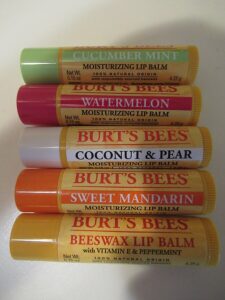In the early 1980s, Burt Shavitz was living a simple life as a beekeeper in rural Maine, far removed from his earlier career as a photojournalist in New York City.
One day, he gave a ride to a hitchhiker named Roxanne Quimby, an artist who had also left city life behind and embraced a back-to-the-land lifestyle. An unlikely friendship and business partnership was born.
Burt had been stockpiling beeswax from his honey harvests, unsure of what to do with the excess. Roxanne, ever the creative entrepreneur, suggested putting the beeswax to use by making candles and other products to sell at local craft fairs. They started cooking up batches of beeswax candles and hand-pouring them into unique shapes like fruits and animals.
To differentiate their products, Roxanne came up with the name “Burt’s Bees” after noticing Burt’s habit of stamping his beehives with those two words to discourage bee thieves. Their quirky, hand-made candles became a surprise hit at regional craft fairs and markets. But it was their next creation that really caused the business to take off.
In 1991, Roxanne found an old recipe using leftover beeswax and botanical ingredients to make a simple lip balm. She experimented with formulations and packaging, pouring the balm into small, refillable tins. The original Burt’s Bees Beeswax Lip Balm, with its iconic yellow cap, was born.

More Than Just Profit Margins
From the very beginning, Burt’s Bees was about more than just products. Roxanne and Burt espoused a lifestyle of living simply, treading lightly on the earth, and being resourceful with natural ingredients.
This natural, ethical approach became a core part of their brand values and identity.
Their lip balms and other early skincare products proudly advertised the use of beeswax, honey, herbs, flowers, and minerals sourced directly from nature. They avoided synthetic ingredients, harsh chemicals, and anything tested on animals. This stood in stark contrast to the artificial, chemical-laden personal care products that were prevalent at the time.
A Brand Built on Double Bottom Line Values
Double-bottom-line companies measure success holistically by tracking metrics beyond just revenue and profit margins. Their mission statements and corporate philosophies are built on creating value for all stakeholders – customers, employees, communities, and the planet itself. By embedding these values into their core business strategies rather than treating them as peripheral initiatives, the most impactful double-bottom-line organizations can do tremendous good while still being highly profitable enterprises.
Redefining Measures of Success At their core, double-bottom-line businesses reject the longstanding primacy of profit as the be-all and end-all corporate objective. Leaders of these companies understand that relentlessly pursuing profits while ignoring societal and environmental impacts is ultimately a losing long-term proposition. Prioritizing stakeholder shared value over short-term shareholder value paves the way for long-term resiliency.
Countercultural and Expanding Impact
Burt’s Bees’ “Double Bottom Line” business philosophy of pursuing both financial and societal/environmental missions was unusual, but resonated with countercultural customers drawn to their entrepreneurial, back-to-the-land roots. The brand’s early success showed that consumers would embrace natural products from a company applying socially responsible practices.
As sales grew through grassroots marketing and getting their products into niche natural retailers in the 1990s, Burt’s Bees maintained its D.I.Y. spirit and operations based out of simple facilities in Maine.
Roxanne became an early pioneer of authentically purpose-driven marketing.
She filled the brand’s catalogs with poems, tips, and stories promoting their natural lifestyle.
In the 2000s, the brand achieved major milestones like expanding nationwide distribution at chains like CVS and striking a lucrative acquisition deal with Clorox in 2007 for $925 million.
With the increased revenue and resources, Burt’s Bees was able to deepen its societal impact in key areas:
- Prioritizing use of pure, natural ingredients and achieving impressive levels of natural origin across its product line
- Achieving numerous certifications for sustainable practices and environmental responsibility
- Establishing the Burt’s Bees Greater Good Foundation to drive conservation efforts worldwide
- Powering facilities with renewable energy and recycled/recyclable packaging
Today, Burt’s Bees operates as an environmentally conscious subsidiary of Clorox while maintaining its brand purpose, values, and independent leadership. The company continues to push for ambitious sustainability goals and community support.
By staying true to their founding philosophy of achieving success while being kind to the planet, Burt’s Bees continues to prove that businesses can absolutely pursue profits while also making the world better.
The brand’s tremendous growth from craft fair candle stall to global natural personal care leader is a testament to consumers’ demand for companies that do well by doing good.
The journey of Burt’s Bees demonstrates that financial success and social responsibility are not inherently at odds.
In fact, by weaving purpose into your company’s DNA, you can attract a passionate customer base, cultivate loyal employees, and forge a deeper connection with your community.
The pursuit of profit should never overshadow the potential for positive impact.
Building a company is about more than just the product; it’s about building a legacy that leaves the world a little better than you found it.
So, while financial goals are important, don’t be afraid to integrate your values and a desire to make a difference.
This focus on the double bottom line could be the secret ingredient that transforms your venture from a business into a force for good.

